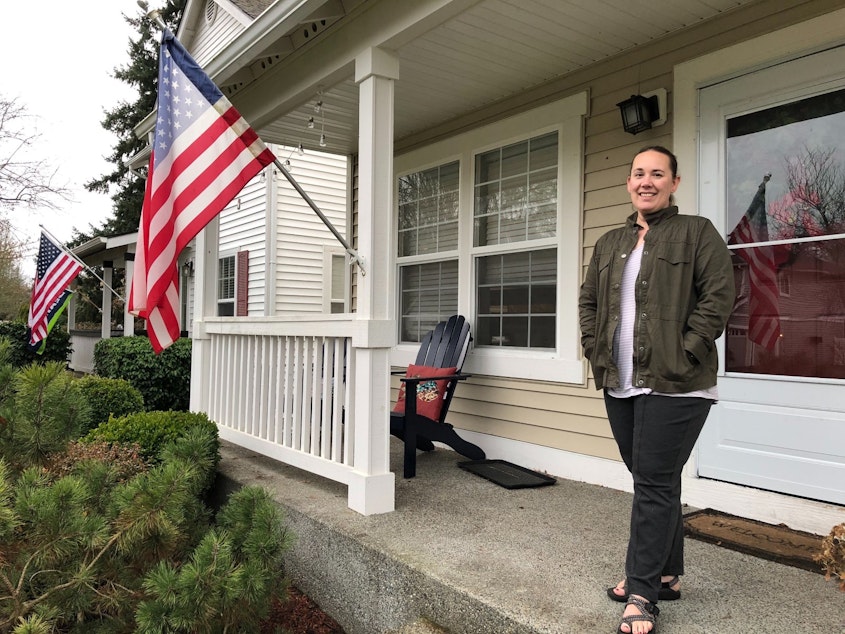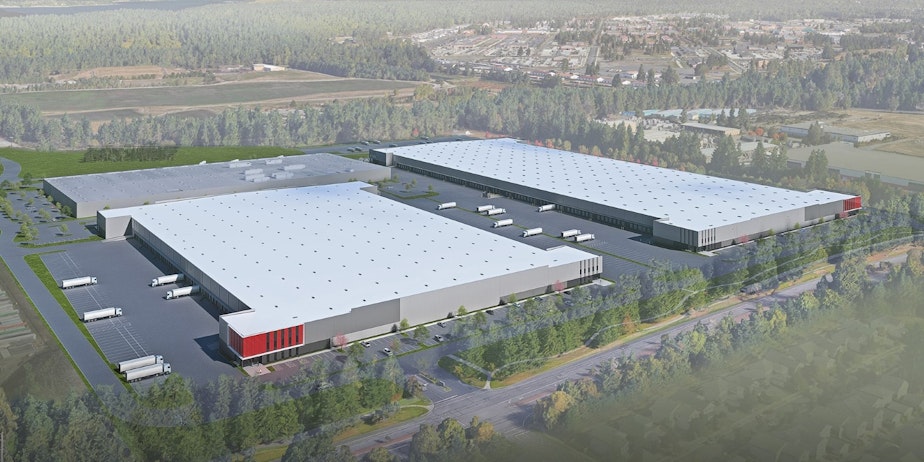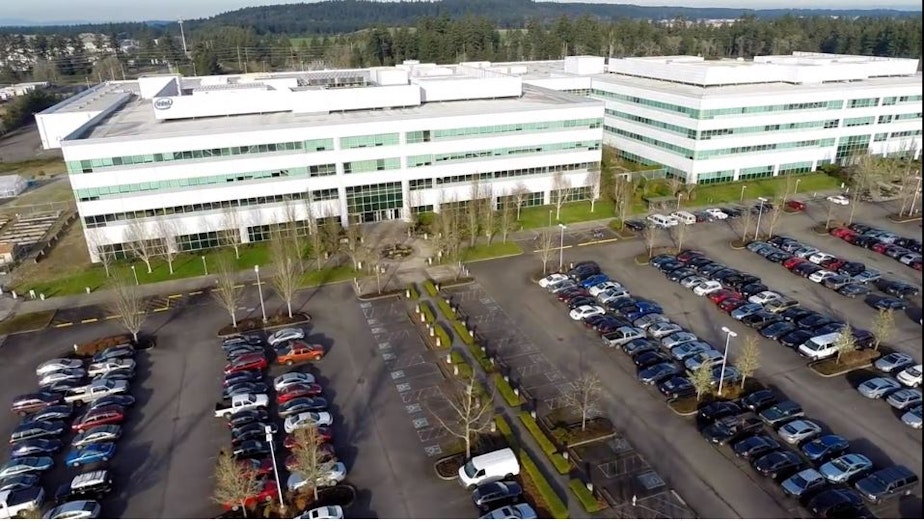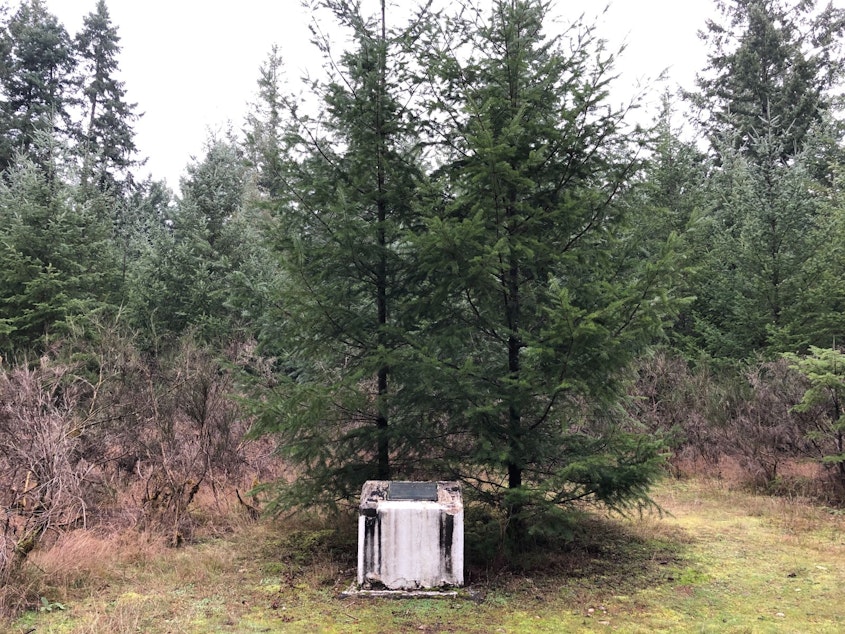‘Living next to a parking lot’ in a Washington town taken over by giant warehouses

DuPont is the next Interstate 5 exit south of Joint Base Lewis-McChord. It may look like a peaceful suburb, but it just went through a bitter mayor’s race with lots of mudslinging.
One of the big reasons: warehouses.
On the outskirts of Amazon's economic impact zone, many smaller communities sometimes struggle to find their place in the tech economy. Failing to land tech jobs, they have to settle for warehouses instead.
DuPont is rich in warehouses. Maybe it’s the town’s proximity to I-5, or its location midway between Seattle and Portland and between Tacoma and Olympia, but warehouse developers really like this town.
Amazon, Ikea, Pier 1, FedEx – they all have major warehouses here.
Mike Courts used to be DuPont's mayor. He showed me yet another one under construction. “They’re pouring the foundation in there right now,” he said, pointing to the construction site.
Courts liked the income warehouses brought the city. He earned the nickname “Concrete Courts.” People call his planning director “Warehouse Wilson.”
But Courts’ support for warehouses cost him his job.
Sponsored

“My residents are not excited about distribution centers," he said. "I don’t blame them. I understand that. But it is part of the world we live in now.”
But this was not the world DuPont planned for itself.
Built next to a large military base, DuPont was a popular destination for troops looking for a family-friendly place to settle down. In the 1990s, leaders wanted to expand its economy to include well-paying, high-tech jobs.
They built new neighborhoods with a gleaming new state-of-the-art campus for Intel, the chip manufacturer, at the center. Mayor Courts said Intel had planned to locate 5,000 employees there. They'd do research and development in these offices and test and manufacture chips in a third building onsite.
Sponsored

But gambling on tech jobs can be dicey because technology changes faster than developers.
The iPhone took off and laptops — with their Intel chips — declined in popularity. Intel killed plans for its DuPont campus, and the landlord couldn’t find another long-term tenant.
Courts said the reason is obvious: Young workers want to work in cities.
“Everyone wants to be where the cool kids are," he said. "Nobody wants to come down here to the 'burbs.”
Sponsored
You can see why planners in the 1990s would have thought otherwise. After all, despite the town's reputation as a home for military families, a large number of residents commute to jobs in Tacoma and Seattle. If people could find a tech job in DuPont instead of making that killer commute to these cities, why wouldn't they?
But it didn't work out that way. Despite insurance company State Farm's choice of DuPont for a regional office, the high-tech Intel office buildings in DuPont sat mostly vacant for 20 years.
Finally, the developer gave up and tore the Intel offices down in 2018. They’re building another warehouse in its place.
Sponsored
For DuPont resident Jennifer McDonald, the demolition of the Intel buildings was a turning point.
“It felt a little bit like the point of no return,” she said. "After that it felt like damage control. What can we salvage from this?"
She said it seemed that the city was green-lighting every warehouse development that came before the city.
Under Mayor Courts' administration, the city grew enough warehouses to cover 35 football fields, over 2 million square feet.
“A few of them were fine," said McDonald. "A couple maybe, but the most recent one that popped in, all of a sudden the trees disappeared. And all of a sudden it felt like you’re not living in a neighborhood anymore — you’re living next to a parking lot.”
Sponsored
This disagreement about how many warehouses are too many was at the center of the recent mayor’s race in DuPont.
Ron Frederick challenged Mayor Courts. He was one of many citizens who pooled money to hire a lawyer to fight off several warehouses.
He showed me the spot where one of them would have gone.

“The entire area here is infused with historical and ecological and archaeological artifacts," he said as we hiked down a wooded path towards Puget Sound. “Now right in this area that we’re walking through — as we go down the trail — there was a developer who wanted to build a warehouse here.”
Frederick led me to a monument in a younger section of forest. The monument marked what many believe to be the site of the first Fourth of July celebration West of the Mississippi. The spot is near Fort Steilacoom, a replica of which you may have seen in Tacoma's Point Defiance Park.
“The archaeological marker would have been in the center of a warehouse,” he said.
At campaign events, Frederick said DuPont needed to stop with the warehouses. He warned of 18-wheel trucks barreling past schools and truckers throwing bottles of pee out their windows, "trucker bombs" he called them.
His campaign ads focused on protecting DuPont’s quality of life. “Don’t bury everything I cherish about it under warehouses,” a young man said in one video posted on Facebook.
MikeCourts told voters that he cared about DuPont, too. But it wasn’t enough to sway voters to his side. Frederick beat him 65% to 35%.
“Oh, I got smoked," he said. "I got beat up.”
Courts left his job at the end of last year feeling scapegoated for changes to the economy outside his control, like the rise of e-commerce, and the warehouses that fuel the industry..
“When we live in this society where you can have three Amazon trucks come to your house every single day, they all come from somewhere," he said. "They come from places like this.”
As for Frederick, he's trying to project calm after a divisive election. He waves away the previous mayor's accusation that he's set on tearing down warehouses already built. But as new warehouse proposals roll in, Mayor Frederick says they'll get the thorough review they deserve.




